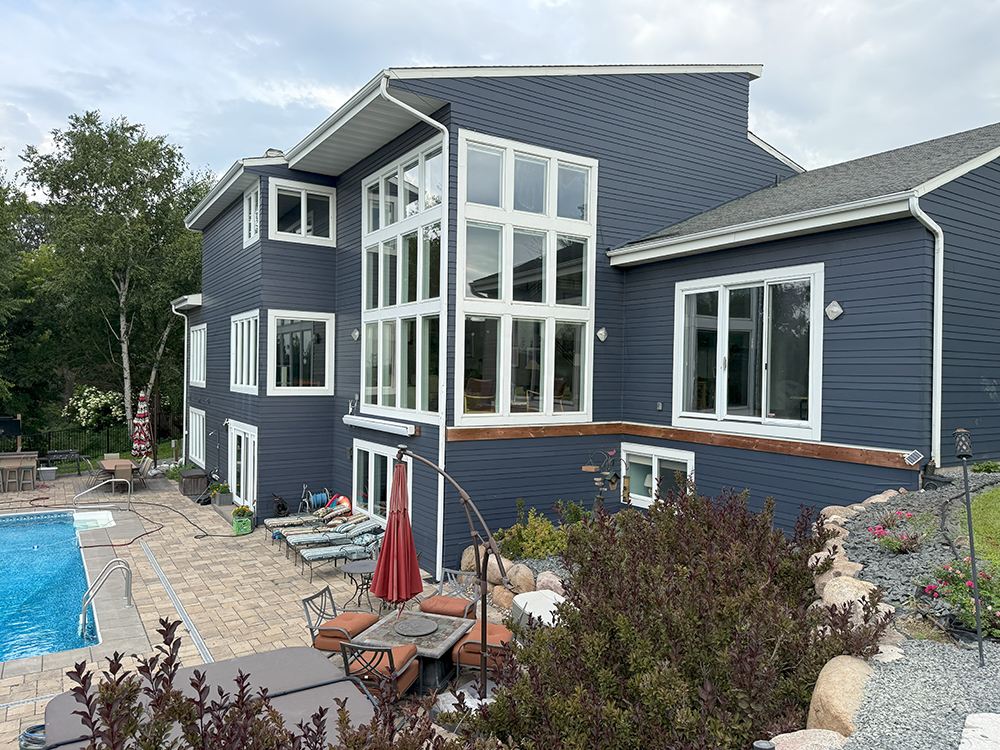Water damage is a serious threat to your home’s exterior and can quickly lead to expensive repairs if ignored. Different siding materials show signs of water damage in unique ways, and knowing what to look for is the first step to protecting your home. Whether you have vinyl, wood, or masonite siding, spotting water damage early can save you time, money, and stress.
Why Early Detection of Water Damage Matters
Water damage weakens siding and the materials underneath, compromising your home’s structural integrity. Over time, moisture can lead to wood rot, mold, or even pest infestations, making your home less safe. Addressing the problem early helps prevent costly repairs and keeps your home in top condition.
How to Spot Water Damage Based on Siding Type
Vinyl Siding
Vinyl siding, while resistant to rot, can still show signs of water infiltration. Check for streaking under the seams where two panels overlap. This may indicate water seeping behind the siding. Warping or buckling can also occur when moisture is trapped beneath improperly installed panels.
Masonite Siding
Masonite siding is particularly prone to water damage due to its wood-based composition. Peeling paint, especially when it occurs in patches, can signal moisture intrusion. Additionally, look for rot along the bottom edges, as these areas are most vulnerable to water exposure.
Wood Siding
Wood siding shows clear signs of water damage when problems arise. Areas that feel soft to the touch often indicate wood rot. Pay attention to areas where woodpeckers are active—this may suggest insect infestations in water-damaged wood.
Common Causes of Water Damage
Water damage to siding can occur for several reasons. Poor installation, such as gaps or improper sealing, often allows water to seep behind the material. Weather exposure, like heavy rain or snow, can exacerbate even small vulnerabilities. Additionally, clogged gutters may direct water onto your siding, leading to long-term issues. Neglecting regular maintenance increases the risk of damage, so consistent care is essential.
Steps to Address Water Damage
If you notice water damage on your siding, act quickly. Start by assessing the severity of the issue. For minor problems, patching or repainting may suffice. Severe damage may require replacing sections of siding entirely. Fixing the root cause, such as poor drainage or damaged gutters, is crucial to prevent the problem from recurring. For wood or masonite siding, applying a fresh coat of protective paint or sealant can help shield it from future moisture.
Preventing Water Damage
While knowing how to spot water damage is critical, preventing it in the first place is even better. Regularly inspect your siding for signs of wear or damage, especially after major storms. Keep gutters and downspouts clean to ensure water is directed away from your home. If you have wood or masonite siding, maintain a high-quality protective coating to reduce moisture penetration. Lastly, address any issues—like peeling paint or cracks—as soon as you notice them.
Conclusion
Spotting water damage on your siding is an essential skill for homeowners. By understanding how different siding materials react to water, you can identify problems early and protect your home from further damage. From streaking under vinyl siding to peeling paint on masonite and rot in wood siding, knowing what to look for helps you take swift action. If you’ve spotted signs of water damage, don’t delay—contact us at Craftsman’s Choice today for expert advice and repairs to keep your home safe and beautiful.



















